11 Yellow-Flowering Bushes with Environmental Benefits
These 13 remarkable shrubs not only add vibrant splashes of yellow to your landscape but also contribute positively to the environment. From supporting pollinators to improving air quality and much more.
In this article, we will go through the list of yellow flowering bushes with ecological benefits for your garden which our experts handpicked after seeing and inspecting the shrubs in real life.


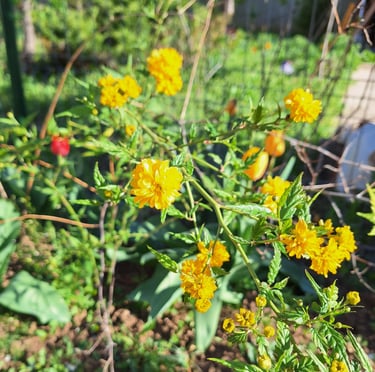



How Can These Bushes Benefit the Environment?
After growing a bunch of yellow-flowering bushes like Forsythia and Potentilla are vital for ecosystems, attracting pollinators and improving soil health. They aid in nitrogen fixation and erosion control, enhancing soil fertility. Their dense foliage offers shelter for wildlife, supporting biodiversity in gardens.
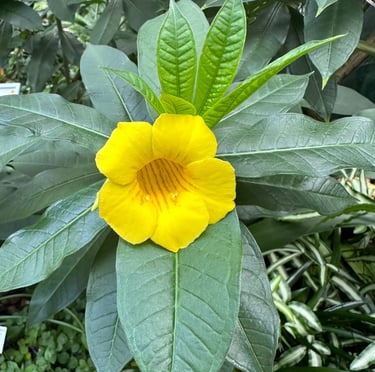

Golden Bell
This green flowering bush called Golden Bell, reaching 2-3 m (6-10 ft), loves full sun and well-drained soil. We found that its branches with bright yellow flowers create a stunning display in early spring, making it ideal for fences and trellises.



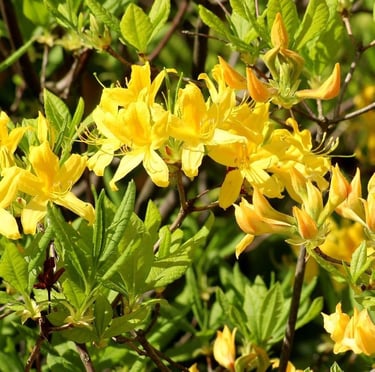

Azalea 'Lemon Lights'
'Lemon Lights' Azalea, reaching up to 1.5 m (5 ft), thrives in acidic, well-drained soil and partial shade. Its bright yellow blooms in spring are a stunning addition to any garden, offering a splash of color and we also found that they support pollinators more than other blooms.





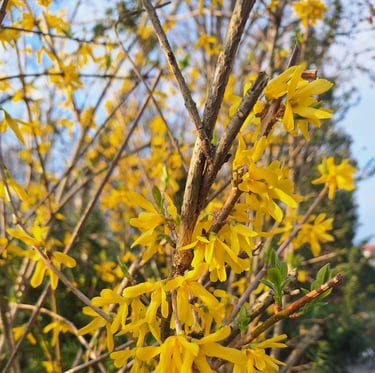
Forsythia
Forsythia is perfect for filling your yard in the spring with a burst of yellow blooms, but alsogreat for minimal care lanscaping. Its branches can stretch up to 3m (10 feet). Plant these small yellow flowering trees in the fall or early spring, in full sun to partial shade, and let the sunshine in. Forsythias can grow as much as 24 inches in a year.




Kerria Japonica
This Yellow-flowering bush reaches about 1-2 m (3-6 ft) and prefers partial shade and moist, well-drained soil. Its unique, pom-pom-like yellow flowers and arching branches add a whimsical touch to gardens.






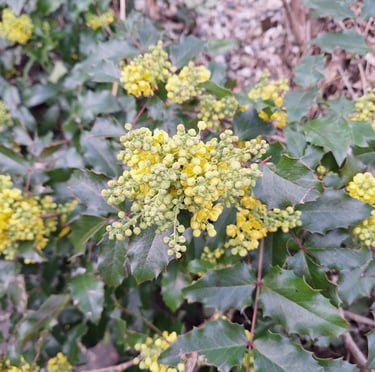

Mahonia
Mahonia grows to 1-2 m (3-6 ft) and loves partial to full shade and well-drained soil. Its yellow flowers in early spring are followed by blue-black berries, attracting birds and wildlife. This evergreen shrub is excellent for natural landscaping.



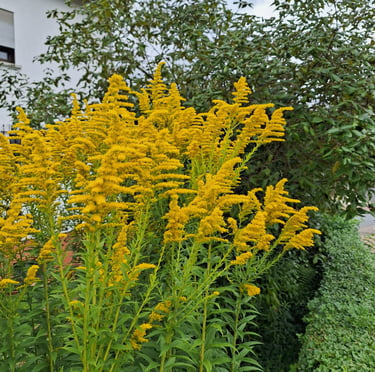

Goldenrod
Goldenrod can be seen as a weed with yellow flowers that reaches heights of 60-150 cm (2-5 ft) and thrives in full sun and well-drained soil. This bush is a magnet for pollinators, especially bees and butterflies, enhancing biodiversity. It's also known for its role in soil improvement and is used in wildflower meadows for its adaptability and low maintenance.






Witch Hazel
Witch Hazels are intriguing with their ribbon-like bright yellow petals that bloom in late winter or early spring when most plants are dormant. They are hardy and low maintenance bushes, making them a standout choice for a year-round interest garden.


Potentilla
Potentilla is a low maintenance shrub that reaches 60-120 cm (2-4 ft) and prefers full sun and well-drained soil. It's known for its long blooming season, offering flowers from late spring to fall. This hardy shrub is perfect for borders or as a low hedge, similar to the Boxwood shrubs, providing continuous color and easy care.
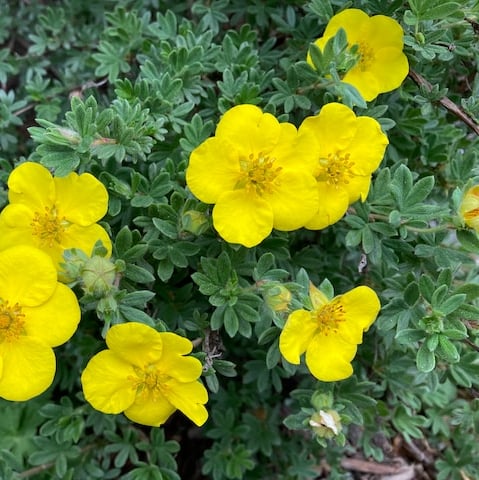





'Honeycomb' Butterfly Bush, growing to 2-3 m (6-10 ft), loves full sun and well-drained soil like most other shrubs. Its unique yellow blooms attract butterflies and bees, adding life and color to the garden. While it can be found in this yellow color the most comon appearance is as a bush with purple flowers.


Butterfly Bush 'Honeycomb'



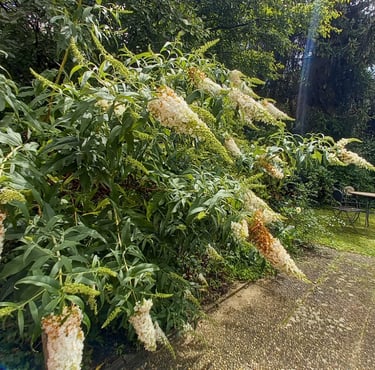
Winter Jasmine
Winter Jasmine, growing to 3 m (10 ft), thrives in full sun to partial shade and well-drained soil. Its bright yellow flowers in winter are a cheerful sight. This bush is great for covering slopes and walls, helping to prevent soil erosion.
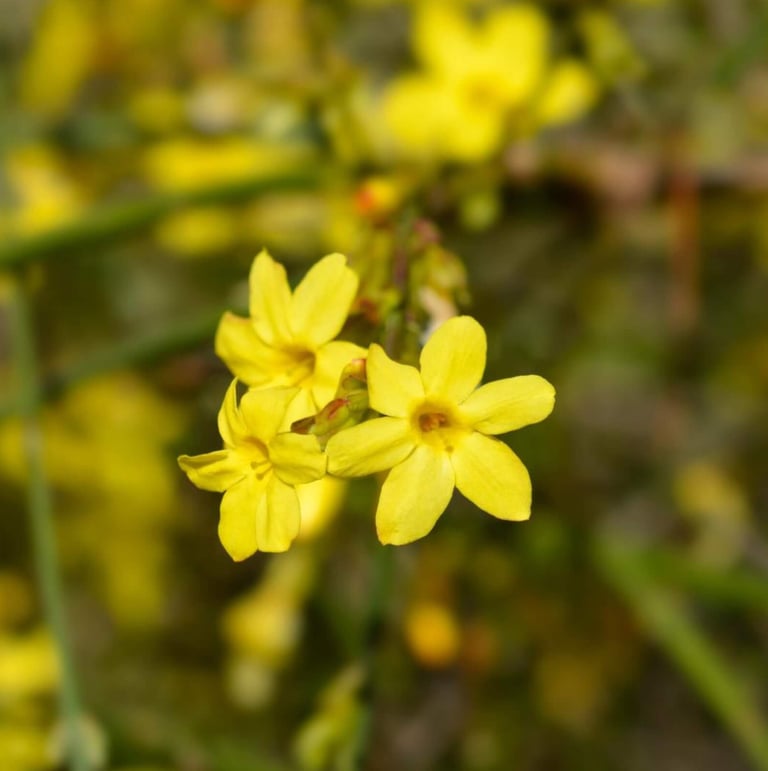





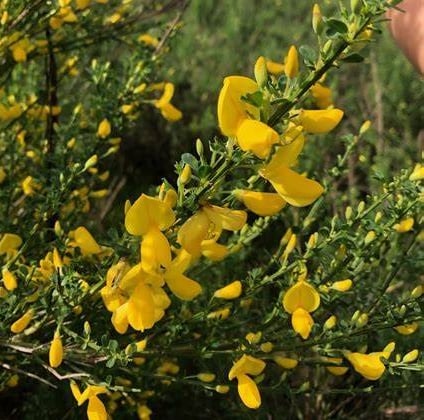

Scotch Broom
Scotch Broom can grow up to 1-2 m (3-6 ft) and prefers full sun and well-drained, sandy soil. Its bright yellow flowers are not only visually striking but also provide an important food source for bees in early spring. Additionally, Scotch Broom is used in land reclamation projects due to its ability to fix nitrogen in the soil, improving soil fertility.



Sources
Nature and Sustainability uses only high-quality sources, including peer-reviewed studies, and other fact-dense and highly trusted sources to support the facts that we use in our articles. Please read our editorial policy to learn more about how we keep our content accurate, reliable, and trustworthy.
Pollinator Information: What is a pollinator? - Pollinators (U.S. National Park Service) (nps.gov)
Plant Ecology: https://www.sciencedirect.com/topics/earth-and-planetary-sciences/plant-ecolog
Butterfly Bush: Buddleja davidii (Butterfly Bush, Orange-Eyed Butterfly Bush, Summer Lilac) | North Carolina Extension Gardener Plant Toolbox (ncsu.edu)
Share this article:




Article By:
Calin has been in the garden industry for 5 years and knows a lot about gardening and plants. He owns this website and is responsible for most of the content.
Reviewed By:


Florin, a more technical guy, is responsible for designing, reviewing and updating the articles but also optimizing for SEO so that everything we publish is deam good.



